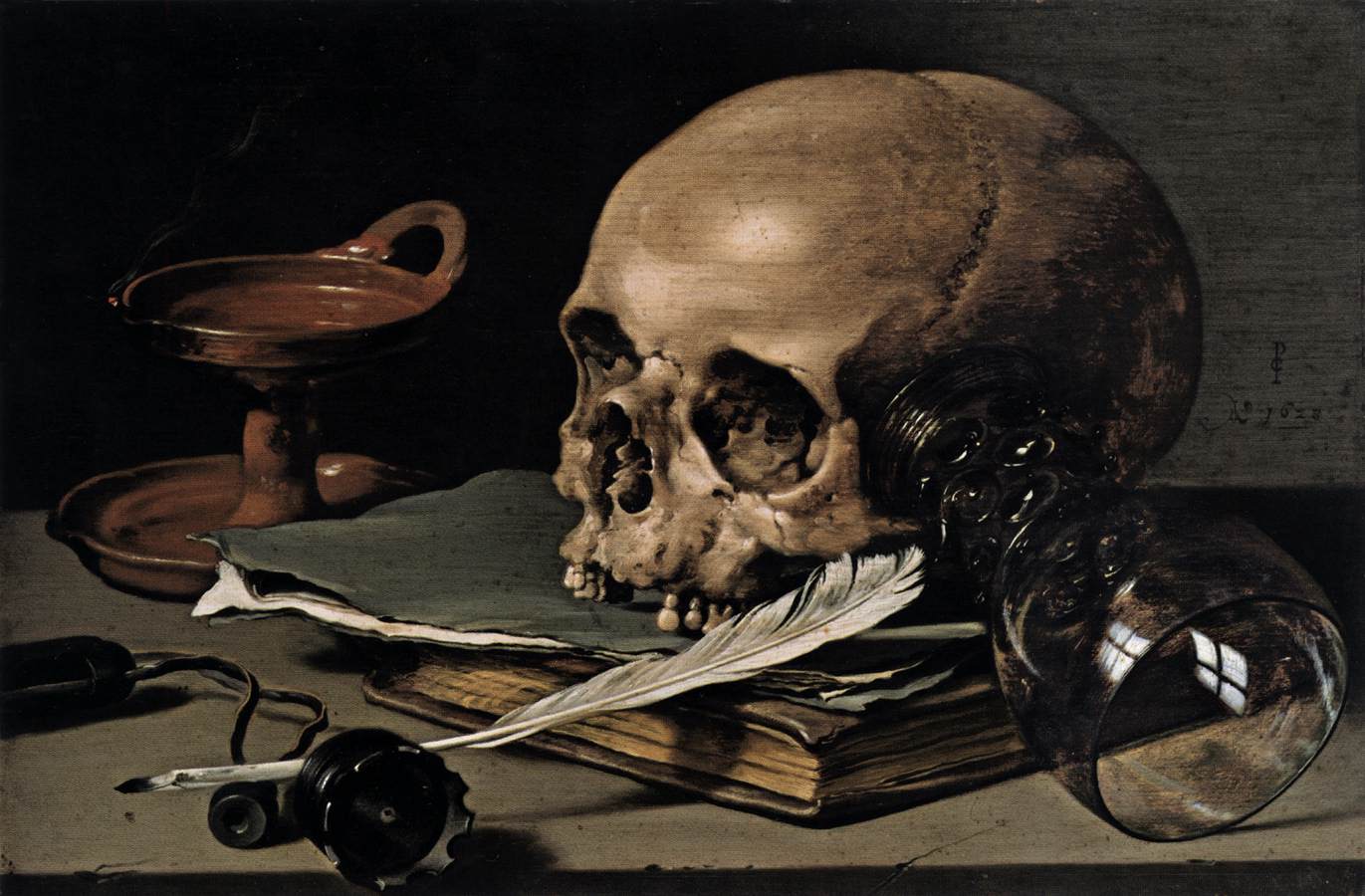Description
The painting Still-Life with a Skull and Writing Quill by the Dutch artist Pieter Claesz is a masterpiece of the 17th century still life genre. This painting is one of Claesz's most famous and recognized, and has been the subject of study and analysis by art experts for centuries.
Claesz's artistic style is typical of the Dutch Baroque, which is characterized by precision and realism in the representation of everyday objects. The composition of the painting is very impressive, as Claesz manages to create a sense of depth and space on a flat surface. The main object of the painting is a human skull, which is located in the center of the composition and is the most prominent element of the work. The objects surrounding the skull, such as the writing pen, the book, and the wine bottle, are arranged in a careful and balanced manner, creating a sense of harmony and balance.
The color of the paint is another interesting aspect. Claesz uses a muted, sober color palette, reflecting the ephemeral nature of life and death. Brown, gray and black tones dominate the painting, creating a gloomy and melancholy atmosphere.
The history of the painting is also fascinating. It is believed to have been painted around 1628, when Claesz was in his 30s. At that time, still lifes were very popular in the Netherlands, and Claesz was one of the leading artists in this genre. The painting has passed through various hands over the centuries and has been exhibited in several renowned galleries and museums.
Finally, there are some little-known aspects of painting that are worth mentioning. For example, the human skull in the painting is believed to be real and belonged to a friend of the artist. In addition, the writing pen that appears in the painting is a reference to human vanity and the idea that words can be as ephemeral as life itself. These small details make the painting even more intriguing and mysterious.

